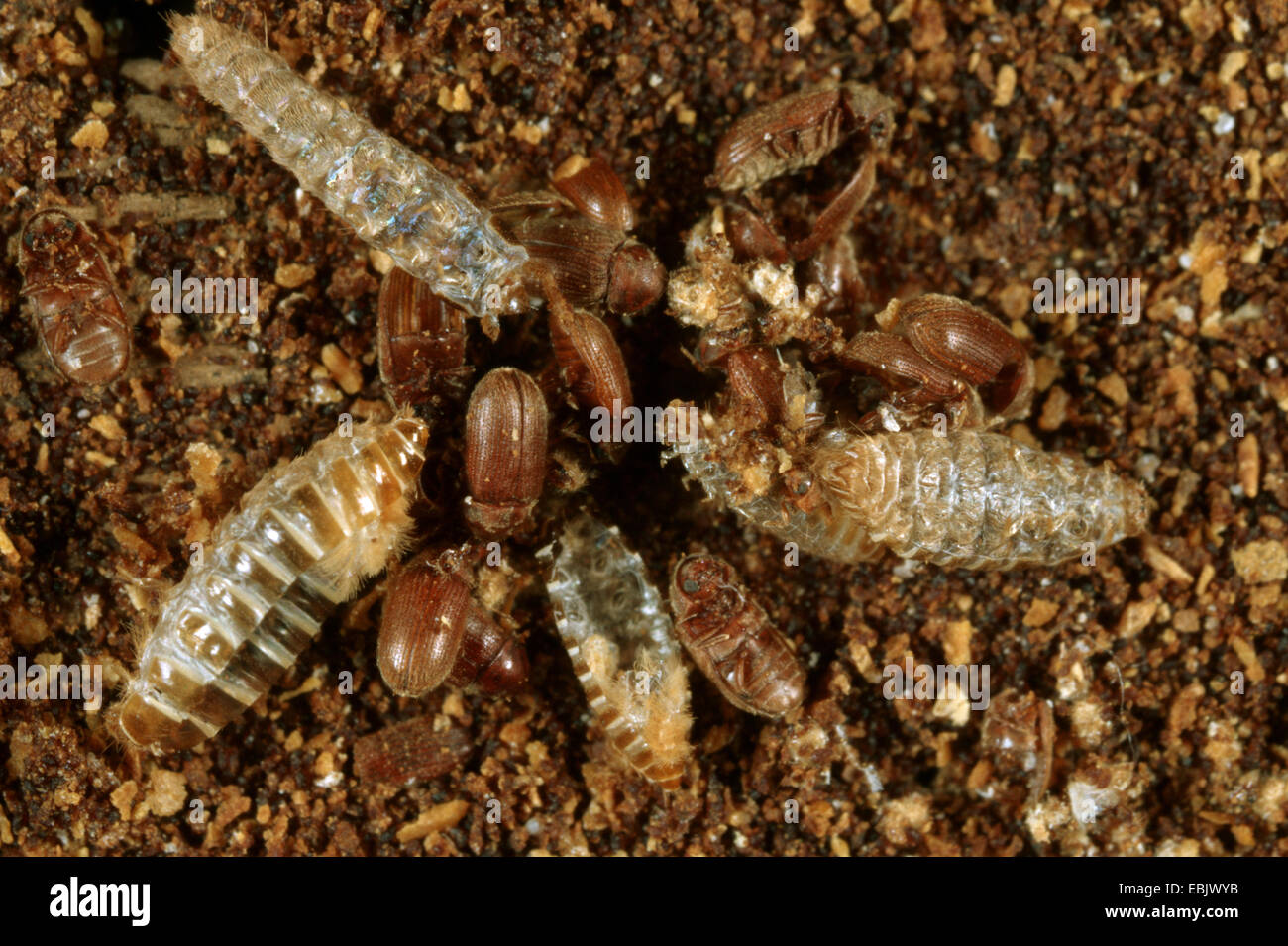
Check packaging of items in store to ensure they have not been tampered with. Infestations can occur if store-bought food has been contaminated.Use caution when purchasing items in bulk. Keep items stored in a refrigerator or use airtight containers.Avoid using water during cleaning to prevent humidity buildup.
 Keep cabinet areas vacuumed, cleaned and well ventilated. Suspect food should be placed in a freezer for at least six days. Food already infested by this beetle should be discarded in outdoor receptacle bins. Precautions should be taken at home and when purchasing food in stores. Sanitization and food storage are critical to the prevention and control of drugstore beetles. The drugstore beetle thrives in warmer climates, but can be found worldwide, especially in climate-controlled structures. It can also sometimes be found in libraries or other areas where significant amounts of paper are typically stored. In homes, it is commonly found in pantries or areas where dry goods are stored. Because of this, it is also sometimes referred to as the biscuit beetle or the bread beetle. This beetle acquired its Latin name, paniceum, due to its penchant for bread. They have strong jaws that enable them to chew through hard surfaces, such as foil or wood. The drugstore beetle is appropriately named, as it will feed on most items commonly found in drugstores or pharmacies, including papers and books. Adult drugstore beetles have the ability to fly. Maturing larvae cause the most significant amount of damage to stored food products and are harder to detect. At the end of the larval stage, which takes about 60 days, larvae form small, silky balls that are used as cocoons for protection. These eggs take about nine days to hatch and become larvae. The female can lay more than 100 eggs over a single lifetime. Once eggs hatch they become larvae and feed on nearby food sources.
Keep cabinet areas vacuumed, cleaned and well ventilated. Suspect food should be placed in a freezer for at least six days. Food already infested by this beetle should be discarded in outdoor receptacle bins. Precautions should be taken at home and when purchasing food in stores. Sanitization and food storage are critical to the prevention and control of drugstore beetles. The drugstore beetle thrives in warmer climates, but can be found worldwide, especially in climate-controlled structures. It can also sometimes be found in libraries or other areas where significant amounts of paper are typically stored. In homes, it is commonly found in pantries or areas where dry goods are stored. Because of this, it is also sometimes referred to as the biscuit beetle or the bread beetle. This beetle acquired its Latin name, paniceum, due to its penchant for bread. They have strong jaws that enable them to chew through hard surfaces, such as foil or wood. The drugstore beetle is appropriately named, as it will feed on most items commonly found in drugstores or pharmacies, including papers and books. Adult drugstore beetles have the ability to fly. Maturing larvae cause the most significant amount of damage to stored food products and are harder to detect. At the end of the larval stage, which takes about 60 days, larvae form small, silky balls that are used as cocoons for protection. These eggs take about nine days to hatch and become larvae. The female can lay more than 100 eggs over a single lifetime. Once eggs hatch they become larvae and feed on nearby food sources. 
Ideal temperatures for life cycle development are around 85 degrees Fahrenheit with 60 to 90 percent relative humidity.įemale drugstore beetles lay single eggs in areas where they feed. Behavior: The life cycle of drugstore beetles takes about 75 days to complete, depending on the conditions of the surrounding environment.Color: Most drugstore beetles are either a dark or reddish-brown.Size: The drugstore beetle ranges in size from one-tenth to one-eighth of an inch in length.






 0 kommentar(er)
0 kommentar(er)
